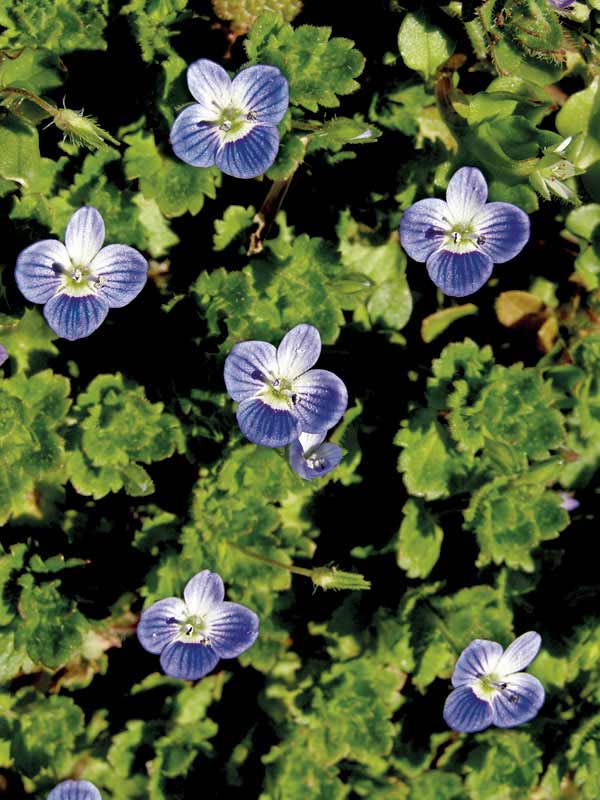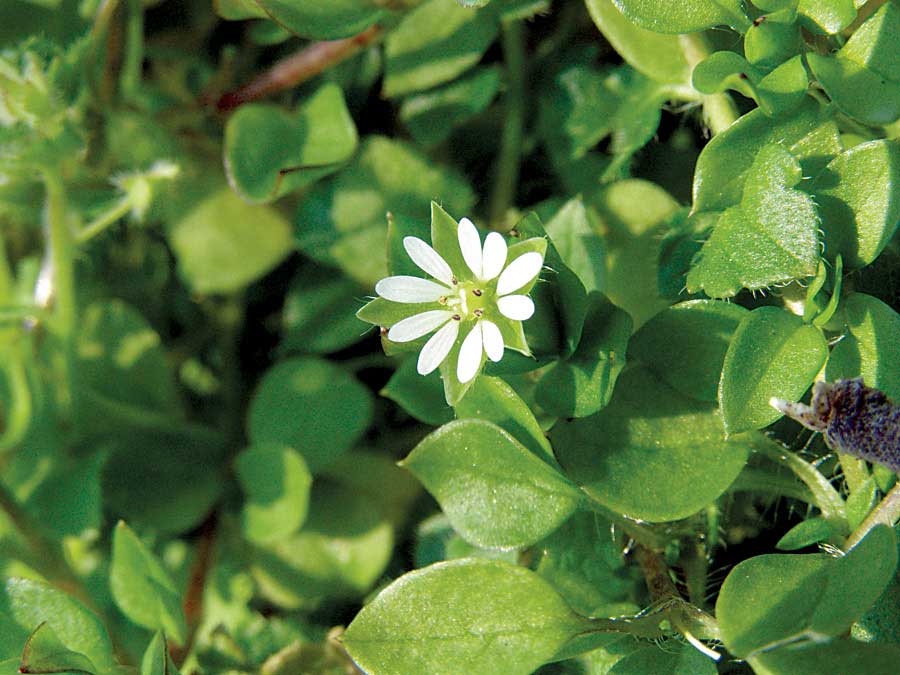Splendor in the grass

Tiny speedwells blooming now in local yards. Photo by Ken Moore
By Ken Moore
Flora Columnist
I’m lucky to live where neighbors have not legislated against hanging laundry out to air dry. In addition to saving electricity and having sun-fresh clothes, I soak up some natural Vitamin D and have the opportunity to enjoy the late February blooming yard.
Many of you have a blooming yard, but you may move over it too quickly to enjoy the diversity of flowers scattered there. But if you have one of those deliberate lawns of turf grass — severely maintained with fertilizers, herbicides and copious amounts of water — you will not have a blooming yard.
To have a blooming yard, you must set about to maintain a “freedom lawn.†Such a lawn is not really too much of a challenge to create and maintain. To succeed, all you have to do is nothing. Your yard will become filled with all sorts of volunteer plants that produce flowers during the growing season. In flower now is an assortment of winter annuals that begin growing in the late fall and burst forth with flowers in early February. February and March snows and ice storms merely provide an extra blanket of warmth from freezing temperatures. Flowering close down on the ground seems to be an advantage during typical cold weather.
You may have to get down on hands and knees to conduct some “belly-button botany†observations to appreciate the floral display. One of my favorites is the lowly common chickweed, Stellaria media. This bane of the lawn perfectionist can shine up at you like hundreds of little bright stars speckled across a bed of pale-green chickweed foliage. Close observation of the tiny quarter-inch diameter flowers will reveal five pure white petals that are split like rabbit ears, appearing to be ten petals. Gently pull one double petal away from the flower to enjoy the tiny white rabbit ears in the palm of your hand. I can’t resist doing that!
Rather than curse the lowly chickweed, being a lazy, carefree gardener, I simply let this early-spring annual romp around on the yard and through garden beds. The tender foliage makes a tasty addition to salads and it is a treat relished by my two parakeets. By late spring, it’s gone, out of sight, until the next winter.
My truly favorite of all the many early-spring yard flowers is the beautiful little speedwell, Veronica persica. Hundreds of blue flowers greeted my downward glances as I was hanging out the laundry a couple of days ago. I never cease to be humbled by the clean beauty of this little quarter-inch-broad four-petal flower when examined at close range.
As did the common chickweed, the speedwell accompanied the Europeans to North America long ago. The speedwell has an herbal heritage as a beneficial diuretic tea that also aids blood purification. For me, the sheer beauty of the flower is reason enough to value underfoot in one’s yard. Looking down on a warmish, sunny winter day to see dozens of them is to experience a “splendor in the grass.â€
Email Ken Moore at flora@carrborocitizen.com. Find previous Ken Moore Citizen columns at The Annotated Flora (carrborocitizen.com/flora).

Chickweed flower has five rabbit ear-like petals. Photo by Ken Moore


Comments are closed.